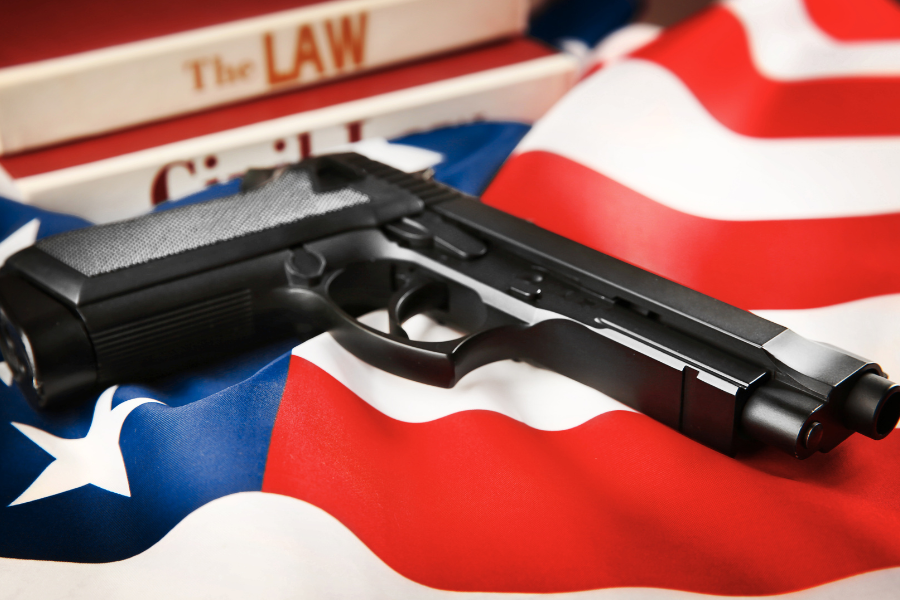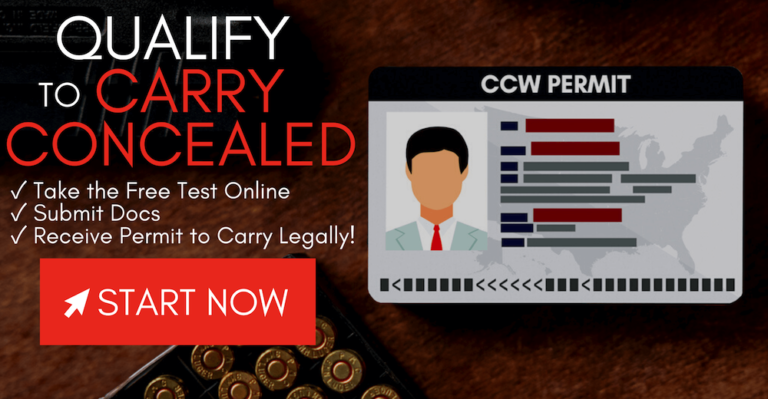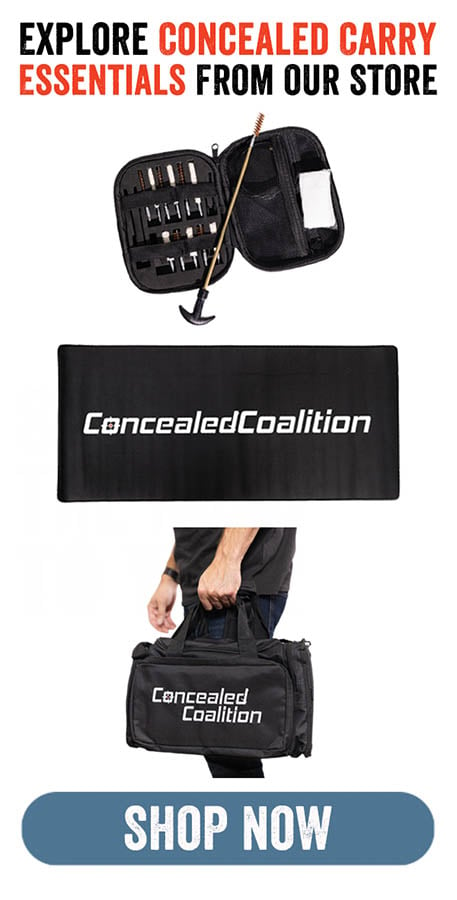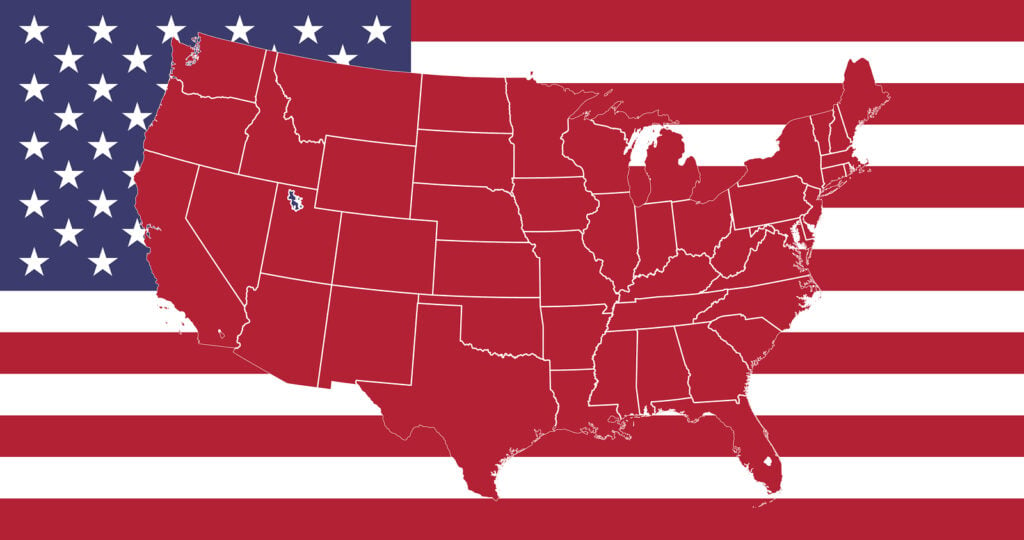The conversation about concealed carry reciprocity—whether a permit from one state should be recognized in others—has been one of the most enduring debates in U.S. firearms law. At the center of that debate stood the Concealed Carry Reciprocity Act of 2017, a bill that passed the House of Representatives but ultimately did not become law.
Today, nearly a decade later, new proposals are surfacing in Congress, and the Supreme Court’s 2022 Bruen decision has shifted the legal landscape. At the same time, more than half of U.S. states now allow some form of permitless carry, creating a patchwork of rules that travelers must navigate carefully.
This article takes an unbiased look at the 2017 Act, why it failed, and what its legacy means for today’s policy discussions. Along the way, we’ll explain how resources like Concealed Coalition help responsible citizens understand the rules in their state and across the country.
What is the Concealed Carry Reciprocity Act of 2017?
The Concealed Carry Reciprocity Act of 2017 (H.R. 38) was introduced in January 2017 by Rep. Richard Hudson. Its goal was simple in concept: if you were eligible to carry concealed under your home state’s laws, you could carry in any other state that allowed concealed carry.
The proposal attracted national attention because it promised to reduce the complexity of carrying while traveling. Instead of juggling dozens of reciprocity agreements, gun owners would have a uniform baseline of recognition.
On December 6, 2017, the House passed the bill in a 231–198 vote. The following day, it was sent to the Senate Judiciary Committee. Despite widespread discussion, the Senate never brought it to the floor for a vote. When the 115th Congress adjourned, the bill expired.
That marked the most recent and serious attempt by Congress to pass a national reciprocity law (though a similar measure (H.R. 822) also cleared the House in 2011 before stalling in the Senate). But the idea didn’t disappear.
Companion Senate Efforts
In parallel, Sen. John Cornyn introduced the Constitutional Concealed Carry Reciprocity Act of 2017 (S. 446). The Senate bill had a similar aim: ensuring that law-abiding citizens could carry across state lines without fear of conflicting local rules.
Like H.R. 38, this measure stalled in committee. Critics raised concerns about states’ rights, enforcement challenges, and differences in training standards between states. Supporters countered that a driver’s license is recognized nationally and concealed carry permits should be no different.
Both sides acknowledged the complexity of balancing federal authority with state-specific safety policies.
Why the Bill Did Not Advance
Several factors contributed to the bill’s failure to become law:
- State Sovereignty Concerns. Opponents argued that the legislation would erode the ability of states to set their own requirements for carrying in public.
- Senate Dynamics. Although the bill passed the House, it faced a Senate where 60 votes were needed to overcome a filibuster, and bipartisan support was not strong enough.
- Public Debate. Gun policy debates were highly polarized, and nationwide reciprocity became a flashpoint in broader discussions about federal versus state authority.
Ultimately, despite momentum in the House, the Senate’s inaction meant the measure never reached the President’s desk.
Post-2017: Renewed Proposals
After 2017, lawmakers reintroduced versions of national reciprocity:
- 2019 and 2021 attempts gained less traction but kept the idea alive.
- In 2023, Rep. Hudson again introduced H.R. 38, showing continuity of the effort.
- In 2025, both House and Senate lawmakers filed new reciprocity bills, again calling for nationwide recognition of concealed carry permits.
These repeated introductions underscore the persistence of the idea, even though practical passage remains uncertain.
For responsible carriers, this uncertainty reinforces the need to track state-level rules closely—something Concealed Coalition helps make easier with updated maps and resources.
The Supreme Court’s Bruen Decision and Its Ripple Effects
In 2022, the Supreme Court decided New York State Rifle & Pistol Association v. Bruen. The Court struck down New York’s “proper cause” requirement for permits, holding that firearm regulations must align with historical traditions of gun regulation.
The decision effectively moved jurisdictions toward “shall-issue” standards, limiting states’ ability to restrict access to permits arbitrarily. However, Bruen also opened the door to new legal battles. States responded by adding training requirements, fees, and extensive lists of “sensitive places” where firearms remain prohibited.
For example, in New York, a federal appeals court in 2025 upheld restrictions on carrying in subways and Times Square, though other challenges to “sensitive place” bans are still ongoing. This reflects the ongoing evolution of what reciprocity and carry rights mean in practice.
Again, the patchwork remains. And that’s why tools like the Concealed Coalition 2025 Concealed Carry Map are so valuable—because they give law-abiding carriers clarity on what rules apply where.
The Rise of Permitless Carry
Since 2017, one of the most significant changes has been the growth of permitless (or “constitutional”) carry.
- In 2017, fewer than 15 states allowed it.
- By 2025, roughly 29 states have some form of permitless carry.
Even so, permits remain important. Why?
- Interstate Travel. Permitless carry usually applies only within the state. To travel across state lines, a recognized permit is often still required.
- Sensitive Places. Restrictions apply even in permitless states—such as schools, government buildings, or certain private venues.
- Practical Benefits. A recognized permit may streamline interactions with law enforcement and give access to more states under reciprocity agreements.
This is where Concealed Coalition plays a central role: providing certification courses that not only meet legal standards but also prepare individuals with real-world training for responsible carry.
Supporters vs. Opponents: The Ongoing Debate
Supporters of national reciprocity argue that:
- It levels the playing field for law-abiding gun owners.
- It protects constitutional rights when traveling.
- It reduces confusion by creating consistent standards.
Opponents counter that:
- States should retain the right to decide who can carry within their borders.
- Differences in training requirements make uniform recognition difficult.
- It could undermine stricter state standards designed for urban areas.
This debate shows no signs of fading. And until Congress acts decisively, the rules remain a patchwork of agreements, statutes, and litigation.
How Concealed Coalition Helps Navigate the Patchwork
For everyday Americans, the details of national legislation matter—but so does the practical reality of carrying responsibly today. Concealed Coalition is committed to helping citizens stay informed and prepared.
Here’s how:
- Certification Training. Concealed Coalition offers courses to help you meet your state’s permit requirements.
- Reciprocity Tools. Their Reciprocity Maps show which states recognize your permit.
- Updated 2025 Map. The 2025 Concealed Carry Map informs you about new laws and agreements.
- Practical Guidance. Beyond legal compliance, their training emphasizes safe, confident handling and responsible awareness.
By turning to Concealed Coalition, carriers can be confident they are acting within the law, even as state and federal landscapes change.
Frequently Asked Questions
Did the 2017 bill become law?
No. The Concealed Carry Reciprocity Act of 2017 passed the House but didn’t make it through the Senate. It never became federal law, so state-by-state concealed carry recognition stayed the same.
Has reciprocity been reintroduced since then?
Yes. National concealed carry reciprocity is still a major legislative topic. Similar bills for nationwide permit recognition have been introduced in Congress in 2019, 2021, 2023, and 2025, reflecting ongoing efforts to address state law differences.
Does permitless carry eliminate the need for a permit?
Permitless carry allows individuals to carry a concealed firearm in their home state without a license. However, it doesn’t typically remove the need for a permit when traveling. A permit from your home state, or one with reciprocity agreements, is often needed to legally carry in other states with different rules.
How do I know where my permit is valid?
To check where your concealed carry permit is valid, use reliable tools like the Concealed Coalition Reciprocity Maps or the updated 2025 Concealed Carry Map. These resources provide the latest state-by-state recognition and help you stay informed about your legal standing.
Conclusion
The Concealed Carry Reciprocity Act of 2017 was a pivotal moment in the national debate over concealed carry rights.
Though it did not become law, it continues to influence discussions in Congress, especially as lawmakers revisit the concept in 2025. At the same time, Bruen and the rise of permitless carry have reshaped the environment, leaving citizens to navigate a patchwork of rules.
For anyone who values the right to carry responsibly, the best step is to stay informed and prepared. Concealed Coalition is here to guide you with training, reciprocity tools, and up-to-date resources.
Take action today: Get concealed carry certified with Concealed Coalition so you can carry in as many states as you’re currently allowed.




